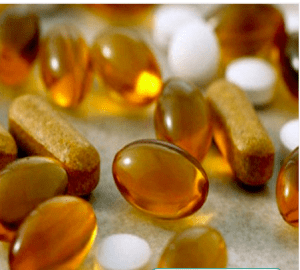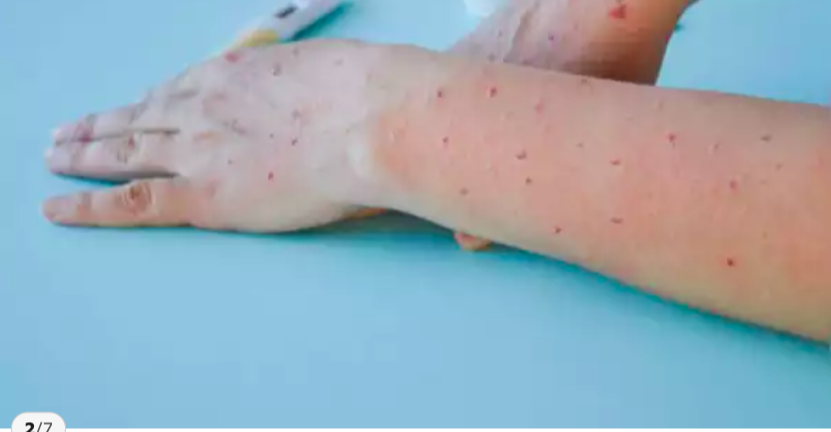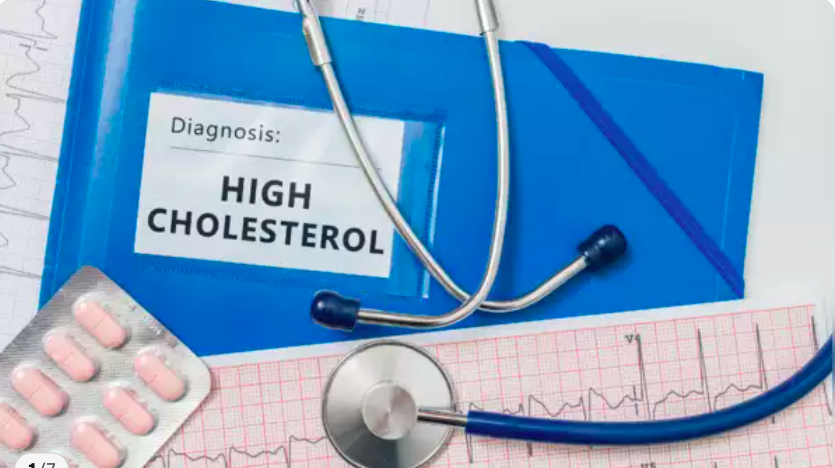Health
Why People Are Losing Their Hair

Last Updated on November 3, 2022 by Nurse Vicky
Why People Are Losing Their Hair
You might be wondering why you are losing your hair. Here are some possible reasons, including Telogen effluvium and too much protein.
Alternatively, you might be experiencing the effects of too much vitamin A and protein in your diet.
Regardless of the cause, it’s important to take action now.
Read on to discover more! But first, let’s talk about a few things to prevent your hair from falling off in the future.
Telogen effluvium

What is Telogen Effluvium? This condition results from a shift in the hair follicles cycle between growth and rest.
Most hair follicles remain in the growth phase most of the time, shedding hair as they transition to telogen.
Occasionally, an abnormal shift occurs, such as after significant emotional stress.
If you suspect that this is the cause of your hair loss, consult a doctor and follow a diet that includes enough protein.
In the normal state, approximately 85% of hair follicles are actively growing and 15% are resting.
However, sometimes a few hairs remain in the resting state, known as catagen.
Anagen hair grows for four years and then falls out in the Telogen phase when a new follicle grows underneath the resting telogen hair and pushes it out.
This process is called the hair growth cycle, and it is normal to lose around 100 hairs a day.
Too much vitamin A

Despite its importance to a healthy diet, too much vitamin A may cause hair to fall off.
Vitamin A is a fat-soluble vitamin essential for proper cell development, immune function, and the growth of hair. However, too much of this essential vitamin can lead to a toxic condition called hypervitaminosis A.
In addition to causing hair loss, too much vitamin A can lead to thinning hair and other health problems.
Fortunately, there are natural ways to reverse hair loss caused by too much Vitamin A.
First, stop taking it or drastically cut back on your intake. Vitamin A is stored in the liver, so too much can overburden the organ.
You should then only take Vitamin A supplements as a last resort.
This way, your body will have time to utilize its own stores before consuming more Vitamin A.
Also, eating foods rich in Vitamin A can help your hair grow back.
Too much protein

If you’re looking for a simple way to get rid of hair fall, you may want to try a protein treatment.
This is because protein treatments coat hair strands in keratin.
Over time, this buildup wears away the cuticle, leaving your hair prone to breakage.
As a result, you may begin to notice your hair feeling brittle, dry, dull, and stiff.
Those are signs that your hair is experiencing protein overload.
While it is true that hair shedding is a normal part of life, too much protein can lead to more problems than you think.
If your hair is limp and brittle, it may be because you’re lacking enough protein. Protein helps create new hair, so if it’s falling out, you may need to boost the amount of protein in your diet.
But even if you aren’t experiencing hair loss, protein can make your hair change color.
According to Cash Lawless, a registered dietitian in Dallas, you should eat 46 grams of protein per day.
For example, a half-cup of pinto beans contains about 11 grams of protein.
Chemical hair treatments

When chemical hair treatments affect the scalp, the result is thinning hair. A chemical treatment can also cause a person’s hair to break off or thin out.
Also, frequent use of heat styling tools can damage the hair shaft, leading to thinning, breakage, and shedding.
Fortunately, there are methods that can help you revive your chemically treated hair.
Here are some examples of treatments.
To protect your scalp and hair, space your treatments at least eight to ten weeks apart.
By doing this, you will prevent damage to hair proteins and improve the health of your follicles.
It is also important to limit the number of chemical hair treatments you undergo at a time.
Some hair-care products contain ingredients that can cause itching and irritation and even thinning hair.
Make sure to choose safe products for your scalp.
Additionally, many ask
How can I stop my hair from falling out?
Image as a consequence of the question “Why Are People Losing Their Hair?”
How to restore the health of your hair and avoid further hair loss
Steer clear of hairdos that tug or pull at the hair.
Steer clear of hair styling appliances that generate a lot of heat.
Do not bleach or treat your hair with any other chemical products.
Utilize a shampoo that is gentle and formulated specifically for your hair.
Make use of a gentle brush that is constructed from natural fibers.
You might benefit from low-level light therapy.
Is the shedding of hair a natural part of aging?
It’s very normal to lose anywhere from 50 to 100 hairs per day. A person is said to have excessive hair shedding when they experience daily hair loss that is much more than average. This disorder is referred to as telogen effluvium in the medical field.
Which vitamin is the most effective for treating hair loss?
According to the Research, These Are the Five Vitamins That Are the Best for Preventing Hair Loss.
Biotin. The cells in your body require sufficient amounts of biotin, also known as vitamin B7…
Iron. Iron is essential for the transportation of oxygen by red blood cells…
Vitamin C. In order for your digestive tract to absorb iron, vitamin C is absolutely necessary…
Vitamin D. It’s possible that you are already aware that vitamin D is essential for healthy bones…. Zinc.
What specific vitamin deficiency leads to hair loss?
A lack of hair loss has only been linked to deficiencies in riboflavin, biotin, folate, and vitamin B12.
What kind of disease leads to hair loss?
Pregnancy, thyroid issues, and anemia are some of the most frequent ailments that are known to cause hair loss. However, there are many other conditions that can also cause hair loss. According to Rogers, some of the other illnesses include autoimmune diseases, polycystic ovarian syndrome (PCOS), and skin conditions like psoriasis and seborrheic dermatitis.
How can I get my hair to grow back?
Image result
Minoxidil is one of the most prevalent treatment alternatives (Rogaine). Minoxidil is available in liquid, foam, and shampoo forms when purchased over the counter (without a prescription). Finasteride (Propecia). This medication is available only with a doctor’s prescription for male patients. Other drugs. Spironolactone (Carospir, Aldactone) and oral dutasteride are two more alternatives that can be taken orally (Avodart).
Which foods are beneficial for the hair?
Image result
Diet and the Key to Healthier Hair
Fatty fish such as salmon, tuna, and mackerel, as well as other types of fish.
Oil pressed from flaxseeds, flaxseeds themselves, chia seeds, and canola oil.
Walnuts.
Tofu, cruciferous vegetables, and soybeans.
Vegetables (broccoli, cauliflower, Brussels sprouts) (broccoli, cauliflower, Brussel sprouts)
Which foods include the vitamin biotin?
The highest concentrations of biotin can be found in organ meats, eggs, salmon, meat, seeds, nuts, and some vegetables (such as sweet potatoes)
Is it possible for vitamin D to prevent hair loss?
When it comes to repairing hair loss, most people have a vitamin D deficiency, along with deficiencies in other important minerals, often iron, vitamin C, and biotin. Therefore, taking a vitamin D supplement may frequently be useful. According to Levitan, “it most definitely helps thicken existing hair.”
What is the primary factor that leads to hair loss in women?
Image result
What factors contribute to female pattern hair loss, often known as FPHL? The genes that run in your family have the potential to make your hair thinner along the crown of your head. Hormonal shifts that occur naturally with aging might lead to hair loss. Menopause: It is common for this type of hair loss to become more severe during menopause because estrogen levels drop during this time.
Does hair loss occur because of stress?
There is a possible link between stress and hair loss. There are three different types of hair loss that have been linked to high amounts of stress: Telogen effluvium. The condition known as telogen effluvium (TEL-o-jun uh-FLOO-vee-um) occurs when an extreme amount of stress causes a considerable number of hair follicles to enter a dormant phase.
The best shampoo for preventing hair loss?
Dove Hairfall Rescue Shampoo L’Oreal Paris Anti-Hairfall Shampoo Ayouthveda Anti-Hairfall Shampoo Mamaearth Onion Hairfall Shampoo Tresemme Hairfall Defense Shampoo Dove Hairfall Rescue Shampoo Plum Ginseng Gentle Rinse Shampoo Brillaire Hair Fall Control Natural Shampoo Indulekha Bringha Shampoo L’Oreal Paris Anti-Hairfall Shampoo Ayouthveda Anti-Hairfall Shampoo Ayouthveda Anti-Hairfall Shampoo Ayouth
Which fruit promotes faster hair growth?
Image result
Papaya. A fruit that is great for the growth of hair is papaya because it is rich in nutrients. It inhibits the progression of baldness, stimulates the hair follicles to encourage new hair growth, and fortifies the hair from the roots up. Additionally, it does wondrous things for eliminating dandruff from the scalp. 14 Oct 2019
Health
6 Daily Habits to Naturally Lower Cholesterol Levels
Health
Understanding the Rapid Spread of Monkeypox’s New Strain Clade 1b

Understanding the Rapid Spread of Monkeypox’s New Strain Clade 1b: Key Facts on Transmission, Symptoms, Severity, and Vaccination
Monkeypox, a viral disease with symptoms resembling smallpox, has recently gained attention due to the emergence of a newstrain, Clade 1b.
This article delves into the essential details about this new variant, including how it spreads, its symptoms, its severity, and the current state of vaccinations.
Our goal is to provide a comprehensive and clear understanding of this evolving situation, enabling readers to stay informed and prepared.
Monkeypox, once a rare and somewhat obscure disease, has recently become a significant public health concern due to the emergence of new strains.
Among these, Clade 1b has been noted for its rapid spread and distinct characteristics.
As we navigate through the complexities of this variant, it is crucial to grasp the fundamentals of its transmission, symptoms, severity, and preventive measures, including vaccination.
Understanding Monkeypox Clade 1b
What is Monkeypox?
Monkeypox is a zoonotic virus belonging to the Orthopoxvirus genus, which also includes smallpox.
First identified in monkeys, it can infect humans through close contact with infected animals or individuals.
While it shares similarities with smallpox, monkeypox tends to be less severe and less transmissible.
Clade 1b Overview
Monkeypox has several clades (strains), with Clade 1b being the most recent and notable for its rapid spread.
This strain has shown increased transmissibility compared to previous clades, raising concerns among public health officials.
Transmission of Clade 1b
Modes of Transmission
Clade 1b spreads primarily through:
- Direct Contact: Contact with bodily fluids, skin lesions, or contaminated surfaces of an infected person.
- Respiratory Droplets: Prolonged face-to-face interaction can lead to transmission through respiratory droplets.
- Animal Contact: Infected animals, particularly rodents and primates, can transmit the virus to humans.
Environmental Factors
Transmission rates can also be influenced by environmental factors such as:
- Crowded Living Conditions: Higher transmission rates are observed in densely populated areas.
- Sanitation Practices: Poor hygiene and sanitation can facilitate the spread of the virus.
Symptoms of Monkeypox Clade 1b
Early Symptoms
The symptoms of Clade 1b may resemble those of other viral infections, making initial diagnosis challenging.
Early symptoms include:
- Fever: A sudden onset of high temperature.
- Headache: Severe headaches that can persist for days.
- Muscle Aches: Generalized muscle pain and discomfort.
- Fatigue: Extreme tiredness and weakness.
Rash and Skin Lesions
A defining feature of monkeypox is the rash, which typically progresses through several stages:
- Macules: Flat, discolored spots on the skin.
- Papules: Raised bumps.
- Vesicles: Fluid-filled blisters.
- Pustules: Pus-filled lesions that eventually crust over.
Severe Symptoms
In more severe cases, symptoms may include:
- Encephalitis: Inflammation of the brain, leading to neurological symptoms.
- Pneumonia: Infection of the lungs that can cause difficulty breathing.
- Secondary Infections: Bacterial infections that may complicate the healing process.
Severity of Clade 1b
General Outlook
Clade 1b has been associated with a higher transmission rate and more severe outcomes compared to other strains. However, the overall severity can vary widely among individuals.
Factors influencing severity include:
- Immune System Status: Individuals with weakened immune systems or pre-existing conditions may experience more severe symptoms.
- Age: Young children and elderly individuals are at higher risk of severe illness.
- Timeliness of Medical Care: Early medical intervention can significantly affect the outcome.
Mortality Rates
The mortality rate for Clade 1b is currently under study, but initial data suggest it may be higher than previous strains. Prompt medical attention and supportive care are crucial in reducing the risk of severe outcomes.
Vaccination and Prevention
Current Vaccines
Vaccination is a key strategy in controlling the spread of monkeypox.
The following vaccines are relevant:
- Smallpox Vaccine: The smallpox vaccine is effective against monkeypox due to the similarities between the viruses. It provides protection for those who have been recently vaccinated or who received it in the past.
- Monkeypox-Specific Vaccine: Research is ongoing into vaccines specifically targeting monkeypox, with several candidates showing promise in trials.
Vaccination Recommendations
Public health authorities recommend vaccination for:
- Healthcare Workers: Individuals who are at higher risk due to their profession.
- High-Risk Populations: People in areas experiencing outbreaks or those with frequent exposure to infected individuals.
Preventive Measures
In addition to vaccination, preventive measures include:
- Good Hygiene: Regular handwashing and use of hand sanitizers.
- Avoiding Contact: Minimizing close contact with individuals displaying symptoms or with infected animals.
- Isolation: Infected individuals should isolate themselves to prevent the spread of the virus.
Conclusion
The emergence of Monkeypox Clade 1b represents a significant challenge to global health. Its increased transmissibility and potential for severe outcomes highlight the importance of staying informed and proactive.
By understanding its transmission, symptoms, and preventive measures, individuals and communities can better protect themselves and mitigate the impact of this new strain.
FAQs
1. What makes Clade 1b different from other monkeypox strains?
Clade 1b is noted for its increased transmissibility and potentially more severe outcomes compared to other strains.
It spreads faster and may lead to more serious health issues, necessitating closer monitoring and enhanced preventive measures.
2. How can I tell if I have monkeypox or another viral infection?
Monkeypox often begins with flu-like symptoms and progresses to a distinct rash.
If you experience these symptoms, especially if you’ve been in contact with someone who has monkeypox or are in an outbreak area, seek medical advice for accurate diagnosis and testing.
3. Is the smallpox vaccine effective against Monkeypox Clade 1b?
Yes, the smallpox vaccine offers protection against monkeypox, including Clade 1b, due to the similarities between the two viruses.
However, its effectiveness may vary based on factors such as time since vaccination and individual health conditions.
4. Are there any new vaccines specifically for monkeypox?
Research is ongoing to develop and approve vaccines specifically targeting monkeypox.
Several candidates are in various stages of clinical trials, with some showing promising results in enhancing protection against monkeypox strains, including Clade 1b.
5. What should I do if I suspect I have monkeypox?
If you suspect you have monkeypox, contact a healthcare provider immediately. They can guide you through testing, diagnosis, and appropriate care.
In the meantime, practice good hygiene and avoid close contact with others to prevent spreading the virus.
References:
Health
Understanding the Low Risk of Mpox Outbreak in India and Our Preparedness Measures

-

 Trending Stories1 year ago
Trending Stories1 year agoCDC: 1 in 4 Americans Still COVID-Free by End of 2022
-

 Health5 years ago
Health5 years agoMeghan Trainor Shares Motivational New Song ‘Blink’
-

 Health2 years ago
Health2 years agoHow Long Does Monkey Pox Last Before It Surfaces in the Body?
-

 Health2 years ago
Health2 years agoWhat Causes Swollen Body? Understanding Edema and its Triggers
-

 Health4 months ago
Health4 months agoHow Do Pawpaw Seeds Support Cardiovascular Health?
-

 Health3 years ago
Health3 years agoNutrition and the Importance of a Fitness Program – 3 Things to Know
-

 Health3 years ago
Health3 years ago5 Weird Reasons Why Pimples Disappear After Marriage
-

 Health2 years ago
Health2 years agoHealth Benefits Of Pawpaw Seed? 7 Things To Know






